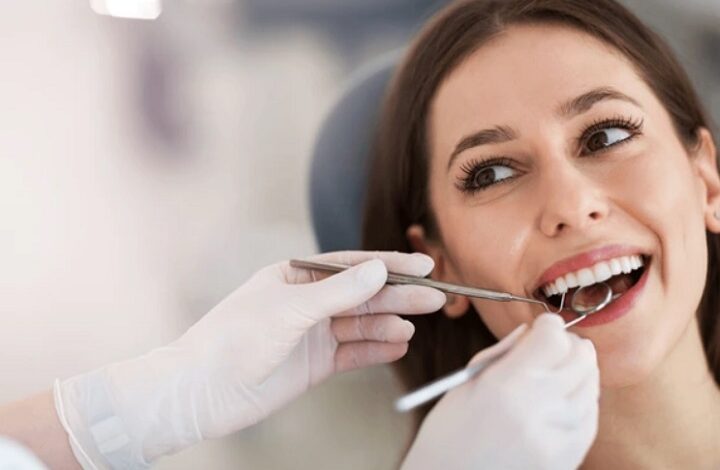How Does Suboxone Cause Enamel Erosion?

How Does Suboxone Cause Enamel Erosion? Suboxone use may lead to noticeable changes in oral health, especially affecting the teeth. The drug Suboxone, which treats opioid addiction, is life-saving but has adverse effects that include erosion of tooth enamel. Increasing reports of severe tooth decay in Suboxone users highlight a serious, often overlooked issue. However, a lawsuit against Suboxone film producers for not warning about dental risks has intensified scrutiny.
Suboxone’s effects on oral health, particularly its role in tooth decay and enamel erosion, were highlighted in the complaint. It emphasised how crucial it is to have honest conversations regarding the side effects of suboxone. We’ll talk about how the medication weakens tooth enamel and eventually causes tooth decay in this blog post.
Why Did Suboxone Become Popular?
Suboxone, which is a combination of naloxone and buprenorphine, is a highly effective medication for treating opioid addiction. Because buprenorphine attaches to the same brain receptors as opioids, it significantly reduces cravings and eases withdrawal symptoms, making the transition from opioid use more manageable.
Naloxone, on the other hand, acts as a deterrent to abuse. When Suboxone is injected, naloxone produces immediate withdrawal symptoms, discouraging usage.
Due to its dual-action mechanism, suboxone became effective in treating addiction. It has disadvantages of its own, though, just like any drug. According to TruLaw, one of these is the potential for teeth erosion and the associated issues that follow. These are the main adverse effects that need to be taken into account and managed.
The Suboxone case started in late 2023 as a result of research showing a significant dental rotting risk associated with the drug. Severe mouth infections and other dental problems were also mentioned.
Dental Health Issues Caused by Suboxone
Suboxone, used for opioid addiction treatment, can lead to several dental health problems:
Dry Mouth (Xerostomia): Reduced saliva can increase the risk of tooth decay, gum disease, and bad breath.
Tooth Decay and Cavities: Less saliva and the acidic nature of Suboxone can promote cavities.
Gum Disease: Poor oral hygiene and dry mouth can lead to swollen, bleeding gums and loose teeth.
Oral Infections: A compromised oral environment can increase the risk of infections like thrush.
Enamel Erosion: Acidic Suboxone can erode tooth enamel, causing sensitivity and decay.
Preventive Measures:
Maintain good oral hygiene
Stay hydrated
Use saliva substitutes
Regular dental check-ups
Limit acidic and sugary foods
These steps can help mitigate dental health issues while using Suboxone.
Can I Prevent Tooth Decay From Suboxone?
Oral health problems aren’t inevitable. With care and planning, you can protect your smile while you’re addressing your addiction.
These are good steps to take:
1. Take Tablets/strips Properly
Some individuals may require multiple Suboxone tablets or strips for each dose. Instead of splitting the pills into several doses, taking both at once may help reduce acid exposure. It’s important to discuss the proper technique with your doctor. Usually, the tablets are placed under the tongue and allowed to dissolve without overlapping.
2. Rinse the Right Way
Take a big sip of water, swish it around your mouth, and swallow after the tablets and strips have completely dissolved.[1] This brief rinse can balance the pH of your mouth and get rid of any leftover medicine.
3. Brush Later
It is tempting to use a toothbrush immediately to scrub away the acids, but this can lead to advanced tooth decay because abrasive toothpaste on softened teeth can be harmful. Wait for at least an hour before brushing.
Indivior’s Selfish Plan and the Consequence of Tooth Decay
Sublingual Suboxone strips were introduced by Indivior to compete with generic versions when their FDA Orphan Drug classification expired. Even though maintaining market supremacy was the aim of this move, it increased the rate of tooth decay among consumers.
Although prolonged usage of the strips can result in dental problems such as tooth decay, infections, and loss, they can enable for quick drug absorption. Indivior did not immediately notify users of these concerns. Only after the FDA issued its 2022 warning—which prompted lawsuits alleging negligence in informing consumers—were labels revised.
Common Damages in Suboxone Tooth Decay Lawsuits
Suboxone tooth decay lawsuit litigants frequently ask for damages for the following:
Medical Expenses: Costs for dental treatments, including fillings, crowns, root canals, and extractions.
Pain and Suffering: Compensation for physical pain and emotional distress caused by dental issues.
Loss of Quality of Life: Impact on daily activities and overall well-being.
Lost Wages: Income lost due to time off work for dental treatments or related health issues.
Future Medical Costs: Anticipated expenses for ongoing or future dental care.
The purpose of these damages is to compensate for the monetary and psychological effects of Suboxone-related dental health problems.
Sweeteners in Suboxone Strips
Suboxone’s recipe contains sweeteners to enhance the flavor. But this is a medication that takes up to 30 minutes to dissolve in the mouth. Acid is created when the sugars are broken down by oral microorganisms. The extended presence of sweets in the mouth during the interval of medicine breakdown increases the risk of enamel erosion.



